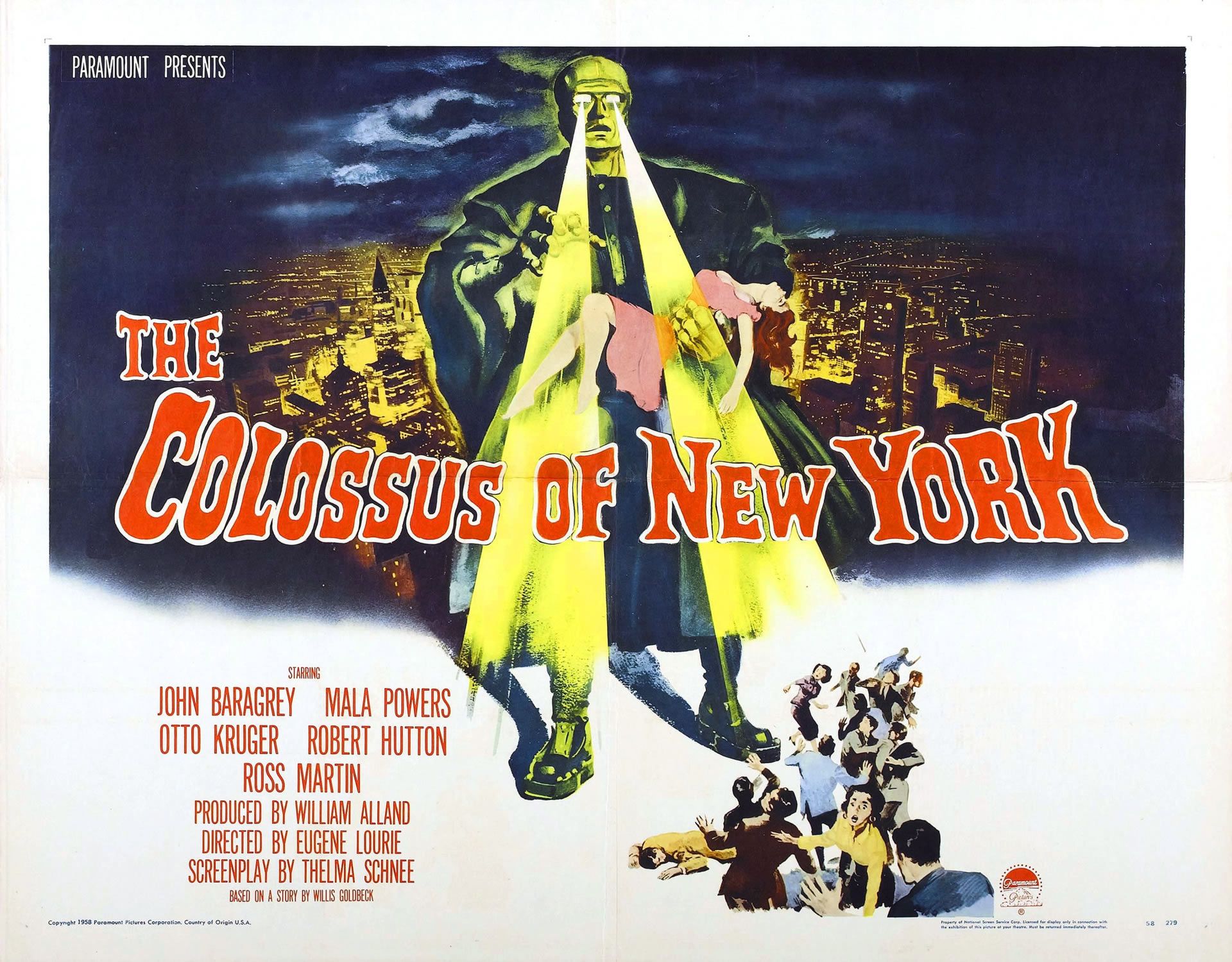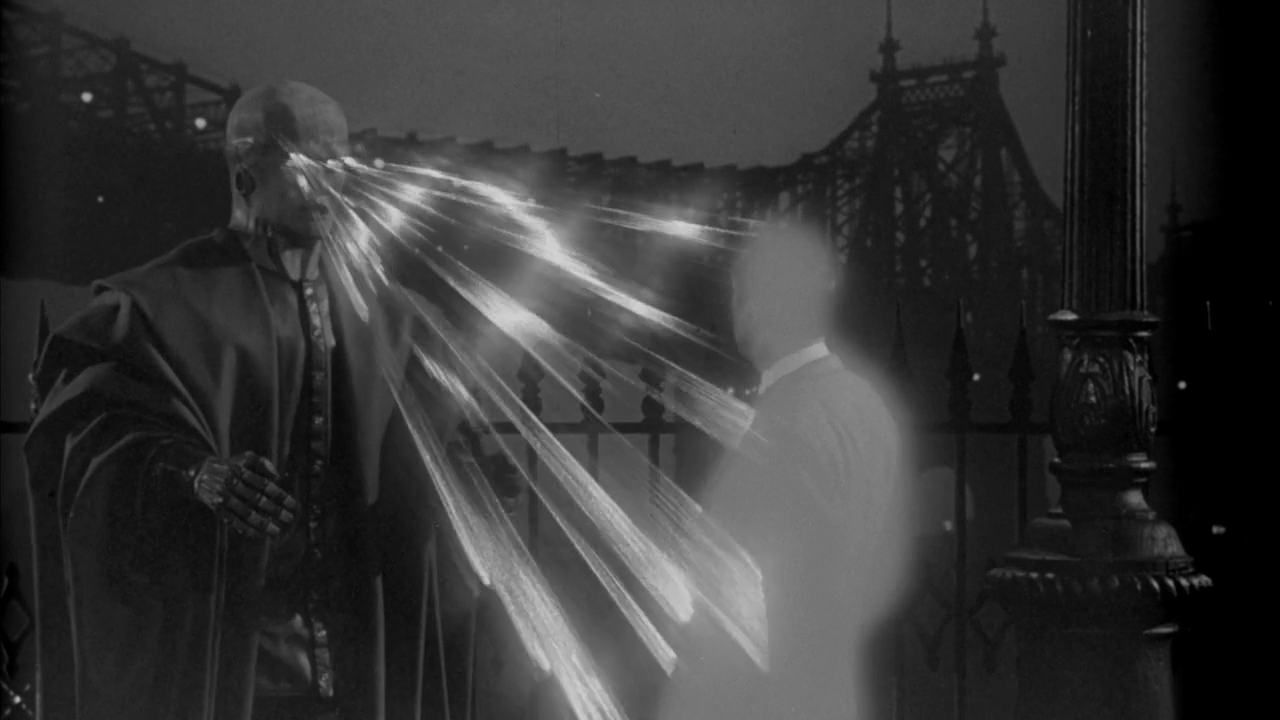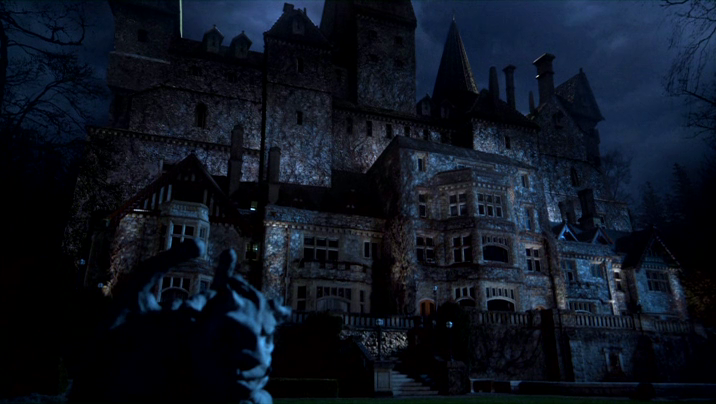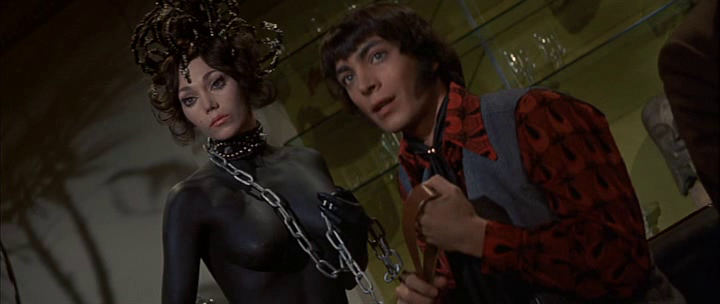In 1982 director Wes Craven tackled the live-action adaptation of Swamp Thing, a DC comic book created by writer Len Wein and legendary artist Bernie Wrightson back in the 70s, but with a script that had only a modicum of similarities to the source material – a scientist turned into a swamp monster and a villain named Arcane who wants him for some reason – and with only a $2 million dollar budget it turned out better than expected, just not one that was all that faithful to the comic book. Flash forward to 1989 and director Jim Wynorski was given the task of bringing a sequel to the big screen, with a slightly higher budget but without Adrienne Barbeau.
The plot of the sequel, and I'm using the word “plot” in the broadest sense, deals not only with the return of the titular Swamp Thing but with that of Anton Arcane (Louis Jourdan), who despite transforming into a boar-lion hybrid creature and being killed by Swamp Thing in the previous film is now back in the land of the living, as well as in human form. There is some lip service to him being found in the swamp by one of his underlings, and somehow resurrected, but this is done via a throwaway line in one of the best examples of lazy screenwriting I've ever seen and doesn’t remotely qualify as an explanation. Anton is now searching for some way to stave off the effects of aging and with the aid of scientists Dr. Rochelle (Ace Mask) and Dr. Lana Zurrell (Sarah Douglas), they have been combining genes from various swamp animals with human test subjects, creating monsters known as Un-Men.
Note: The script never identifies them as Un-Men, this is just another element that is borrowed from the comic books without much in the way of an explanation.
Turns out that these experiments are not going too well, certainly not helped by a "leech man" escaping and attacking a group of government agents who were looking for a moonshining operation in the swamp and drawing unwanted attention, but the key to the success seems to stem from the genetic make-up of Arcane’s late wife. How is this actually supposed to work, you ask? Haven’t a clue, the script keeps tossing in scientific gobbledygook at such a rapid pace in the hope that the viewer won’t figure out that none of this makes a lick of sense. Lucky for Arcane, his stepdaughter Abby (Heath Locklear) picks this moment to pay a visit and ask why she wasn’t invited to her mother’s funeral, Arcane being a dick the most likely reason, but it turns out that she has the same genetic make-up as her mother – because that’s how hereditary genes work – and she’s what required for Rochelle and Zurrell to complete the experiment that will make Arcane immortal.
What are the odds of James Bond showing up to foil this plot?
Meanwhile, Swamp Thing (Dick Durock) has been chilling in the swamp with seemingly no concern that Arcane has somehow risen from the grave and aside from tangling with the aforementioned leech-man a couple of times he really doesn’t seem all that worried about what Arcane is up to, that is until Abby shows up and activates his “swamp boner” and he has to put his superhero pants on to save her from the evil machinations of her stepfather. So yeah, the script certainly could have used a couple of more passes before the cameras started rolling, but not all of this was the fault of director Jim Wynorski as it was a mandate from the studio that at least one actor had to return for the sequel and the only one they could get was Louis Jordan, and while villains returning from the grave in a comic book story is nothing new it’s obvious that Wynorski didn’t really make much of an effort in having the return seem plausible or even remotely organic to the plot.
Clearly, the studio didn’t consider “man in the suit” Dick Durock as a returning actor.
Neither this nor Wes Craven’s film were all that faithful to source material but at least Wes seemed to be making a film that was somewhat in the same genre as the comic book, while in the case of The Return of Swamp Thing, we get a much campier and family-friendly version of Swamp Thing, one that is far removed from what was found in the original comic book or the contemporary take by Alan Moore and Stephen Bissette, which took the comic in an even darker direction than Len Wein and Bernie Wrightson did back in the 1970s. I will say that the monsters created by the effects team for this movie are quite good, and the suit for Swamp Thing is lightyears better than the one Durock was forced to wear back in 1982, but this is clearly not a horror movie and so we must suffer through the lovely Heather Locklear’s performance as a hippy-dippy florist and two local kids trying to snap a picture of Swamp Thing so that they can sell it to the tabloids.
“I’m Swamp Thing's love child.”
This is not to say that Wynorski and screenwriters completely ignored the comic books as this film’s 88-minute running time is liberally sprinkled with elements from the source, even using elements created by Alan Moore for Swamp Thing to make him an even greater threat such as being able to regrow himself after being blown up, sadly, this film fails to deliver an antagonist worthy of such a hero because despite a couple of tussles with Arcane’s Un-Men most of the action deals with Arcane’s security forces, who run around in orange sleeveless jumpsuits and have less accuracy with their firearms than your average Stormtrooper. This results in a film that delivers no real challenge for ole Swampy to deal with, at least the original film had Swamp Thing battling a mutated Arcane while this film gives us a bunch of generic mercenaries and a couple of Un-Men he dispatches with relative ease.
When can we get this version of Arcane and his Un-Men?
I do appreciate that Abby is allowed to escape the typical damsel in distress trope at times, kneeing a captor in the groin and machine-gunning down dozens of incompetent henchmen with glee, but the film’s pathetic climax comes down to Swamp Thing marching into the mad science lab and throwing a chair at Arcane, taking him out in what is basically a “I’ve fallen down and I can’t get up” moment, which then leads to Swamp Thing simply picking up Abby’s lifeless body, having died due to Arcane stealing her life essence, and then marching off into the swamp so that he can resurrect as he did with Adrienne Barbeau in the original film. Wynorski can detonate all the explosions in the world during this climatic battle but it’s still a case of 'Sound and fury, signifying nothing' and it left me rather disappointed as this is the same director who gave us the incredibly fun Deathstalker II and I know if unleashed he could have given us a really great comic book movie.
One cannot deny the fact that this film does look quite good at times.
Stray Observations:
• This movie may not be all that better of an adaptation than the Wes Craven film but the title sequence consists of Bernie Wrightson and Stephen Bissette cover art so that at least shows more love for the source material than the original film had.
• In the pre-credit sequence Swamp Thing saves a government agent from one of Arcane’s Un-Men after it had already killed two agents, but this raises the question, “Wouldn’t the government send in a task force to look for their missing men?” but all we get is a redneck sheriff questioning Arcane and that goes nowhere.
• This actress Sara Douglas’s second foray into live-action DC movies as she played the Kryptonian supervillain Ursa in the Richard Donner Superman movies.
• Arcane has a painted portrait of himself that reveals skeletal features when lightning flashes, and I have to wonder if he used the same decorator as the one from the Haunted Mansion in Disneyland.
• When Swamp Thing and the leech-like Un-Man fight with the steel poles we see them crackling lightning at each impact as if they were re-enacting the finale of The Highlander.
• Wynorski uses footage from the Wes Craven film for a flashback sequence but later when Swamp Thing gives Abby a tuber to eat, that will allow them to have hallucinogenic sex, we see Alec Holland in his human form but it’s not Ray Wise who played Holland in the original.
• Arcane has a parrot named Gigi, which is also the name of a musical starring Leslie Caron and Louis Jordan.
• Swamp Thing tells Abby that this part of the swamp is believed to be haunted by angry ghosts from a slave plantation, which is a reference to a Len Wein/Bernie Wrightson issue pf Swamp Thing where vengeful ghosts of African-American slaves possessed Arcane’s Un-Men and destroyed him.
“Alec, that sounds like a much better plot than the one we are currently stuck in.”
Is this a bad sequel? Absolutely not, there are some areas of definite improvement from the original, the Swamp Thing suit alone makes this entry more watchable, but it’s the script's campy humour that didn’t sit all that well with me – the two little kids that Swamp Thing keeps running into I found to be more annoying than funny – and Louis Jourdan was definitely in paycheck mode as he could barely bring enough energy to the role to be charismatically evil, instead, he came across as mostly bored and tired. Heather Locklear was fine as Abby Arcane, and as mentioned, she was given a couple of badass moments to give the character a bit of a kick, but no time was given to developing the relationship between her and Swamp Thing, which in the comics is Shakespearean in nature, and thus their “Happy Ever After” has no weight and I was left not caring or even interested in their future.
Once again, the suit is awesome I just wish it was in a better movie.
It wouldn’t be until 2019 that we get a more faithful incarnation of Swamp Thing but that was for the small screen and was criminally cancelled before the first season had even finished airing, and while Swamp Thing continues to show up in various DC animated movies I hold up hope that James Gunn will use some of his magic to bring one of my favourite comic characters back to the big screen.

























































